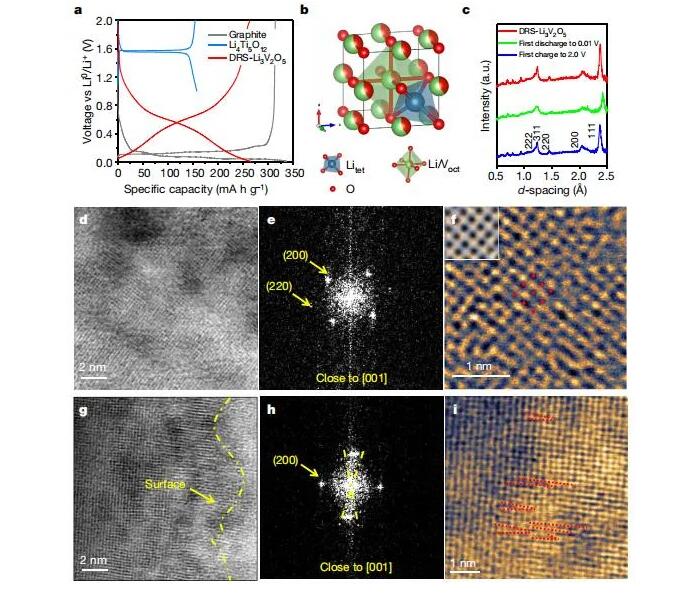-
Call Us
0086-592-7161550 -
Email us
ping@aotbattery.com -
Skype
ping@aotbattery.com
Call Us
0086-592-7161550Email us
ping@aotbattery.comSkype
ping@aotbattery.comA new type of anode material with fast charging, high safety and high energy density, new hope for lithium battery!
Currently, in most commercial lithium-ion batteries (LIBs), two types of negative electrode active materials are usually used. One, the most common is battery graphite, which has a high energy density. LIBs equipped with graphite negative electrodes can be used for cars to drive hundreds of miles without charging. However, during the fast charging process, lithium metal is prone to deposit lithium dendrites on the negative electrode side, which brings extremely serious safety hazards. Second, lithium titanate, a safer alternative, can achieve fast charging, but usually results in a significant drop in energy density.

Figure 1: Voltage curve and structure characterization of original and lithiated DRS
【Introduction to Achievements】
Recently, Professor Ping Liu and Professor Shyue Ping Ong from the University of California, San Diego, Professor Huolin Xin from the University of California Irvine, and Researcher Jun Lu from Argonne National Laboratory (corresponding author) discovered a new type of anode material.
This material allows lithium-ion batteries to be safely recharged thousands of times in minutes. Specifically, the researchers reported a disordered rock salt oxide Li3+xV2O5 (DRS-Li3+xV2O5), which can reversibly circulate two lithium ions at a voltage of 0.6V. Compared with graphite (0.1 V), it has a higher voltage and can effectively avoid lithium dendrites caused by fast charging.
In addition, compared with the commercially available fast-charge lithium titanate (Li4Ti5O12, 1.5 V), Li3+xV2O5 has a lower voltage, a higher specific capacity, and a higher energy density when forming a full battery. Therefore, this new type of disordered rock salt anode Li3+xV2O5 is in the middle position: it is safer than graphite, and the energy density of the composed battery is at least 71% higher than that of Li4Ti5O12. More importantly, after using the Li3V2O5 anode material, the capacity decay is negligible after 1000 cycles. Not only that, it also has excellent rate performance, which can reach 40% capacity within 20 seconds.
Combined with first-principles calculations, this work reveals that the optimal conduction path of lithium ions during the lithium insertion process of Li3+xV2O5 will change due to the redistribution of lithium, which also explains why the material has fast lithium ion conduction characteristics and Lower average cycle potential. Related research results were published on Nature with the title "A disordered rock salt anode for fast-charging lithium-ion batteries". The first authors of this article are Haodong Liu and Zhuoying Zhu.

Tel/Whatsapp: 0086-592-7161550

Scan to wechat:
